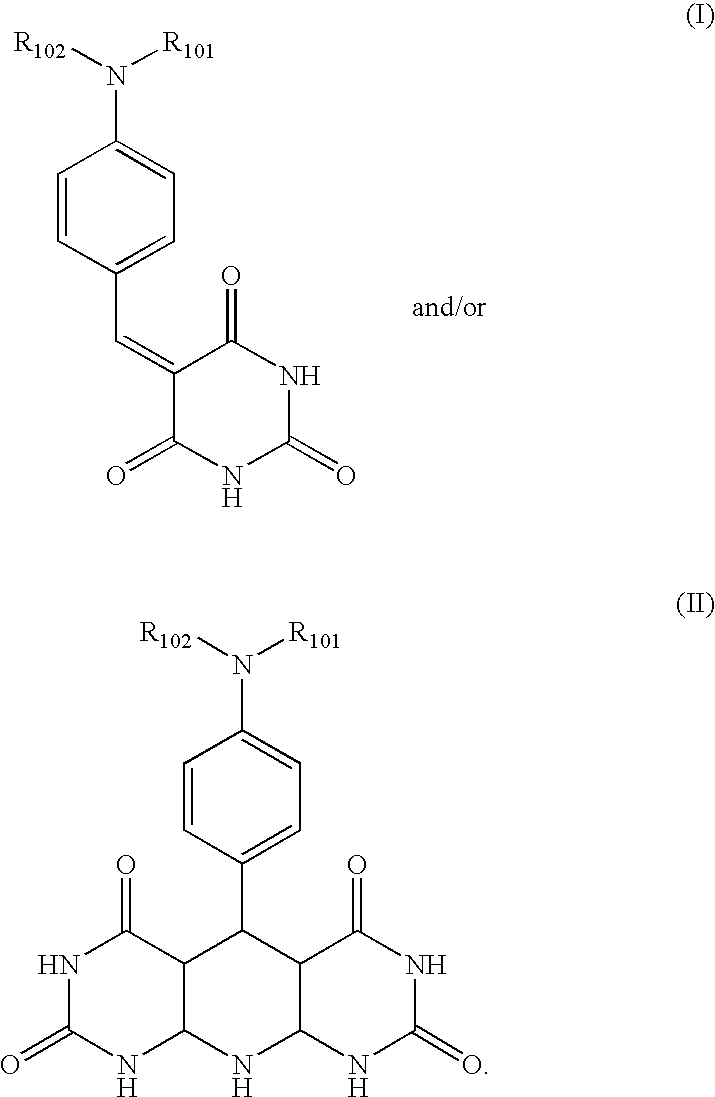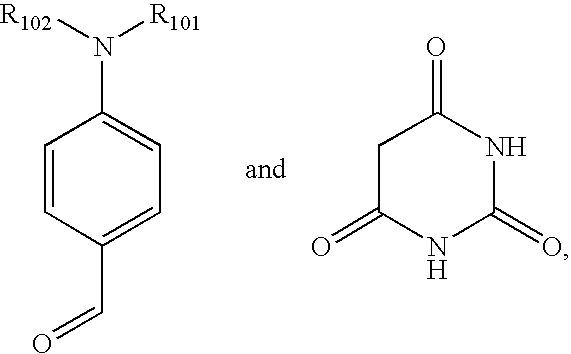Process for the preparation of metal oxide coated organic material by microwave deposition
- Summary
- Abstract
- Description
- Claims
- Application Information
AI Technical Summary
Problems solved by technology
Method used
Image
Examples
example 1
[0105]A piece of 1.5 cm×1.5 cm polycarbonate sheet is rinsed with ethanol and deionized water respectively. It is then immersed into 11 ml boric acid aqueous solution (0.2 M, 2.2 mmol). At first, 1 ml ammonium hexafluorostannate solution (0.1 M, 0.1 mmol) is added and a reaction in a microwave oven is carried out for 1 minute at power level 1. The mixture is allowed to stand for 30 minutes to cool down. Secondly, 10 ml ammonium hexafluorotitanate solution (0.1 M, 1 mmol) are added and the microwave treatment (1 minute at power level 1) is repeated for 5 times at 10 minute intervals. The polycarbonate sheet is removed from the reaction mixture and rinsed with water and ethanol.
example 2
[0106]a) 2 ml toluene solution of polymethyl methacrylate (1.2 wt. %) and 2 ml acetone are added to a glass tube that has one end sealed. The tube has a diameter of 6.0 cm and length of 28.0 cm. By connecting the tube to 20 torr vacuum and rotating it horizontally for 30 minutes a coating of PMMA forms on the interior wall. 10 ml deionized water is used to rinse the PMMA off. The flakes of PMMA are collected by filtration.
[0107]b) To 0.1 g polymethyl methacrylate flakes made with the method of Example 2a) is added 50 ml deionized water. The mixture is sonicated for 20 minutes and transferred to a Teflon beaker. To the stirred mixture is added 10 ml 0.4 M aqueous solution of FeCl3.4NH4F and 10 ml 0.8 M boric acid simultaneously at 0.2 ml / min. The resulting bronze color suspension is stirred for another two hours then treated with microwave irradiation for 10 minutes. 0.4 g powder is collected by filtration and dried in vacuum oven for 12 hrs.
example 3
[0108]0.3 g of the product from Example 2b) are immersed in 10 ml toluene and heated to 60° C. for 5 minutes. The obtained Fe2O3 flakes are sedimentated for three hours, then filtered and rinsed with acetone. The Fe2O3 flakes exhibit a red / yellowish color.
PUM
| Property | Measurement | Unit |
|---|---|---|
| Temperature | aaaaa | aaaaa |
| Freezing point | aaaaa | aaaaa |
| Boiling point | aaaaa | aaaaa |
Abstract
Description
Claims
Application Information
 Login to View More
Login to View More - R&D
- Intellectual Property
- Life Sciences
- Materials
- Tech Scout
- Unparalleled Data Quality
- Higher Quality Content
- 60% Fewer Hallucinations
Browse by: Latest US Patents, China's latest patents, Technical Efficacy Thesaurus, Application Domain, Technology Topic, Popular Technical Reports.
© 2025 PatSnap. All rights reserved.Legal|Privacy policy|Modern Slavery Act Transparency Statement|Sitemap|About US| Contact US: help@patsnap.com



